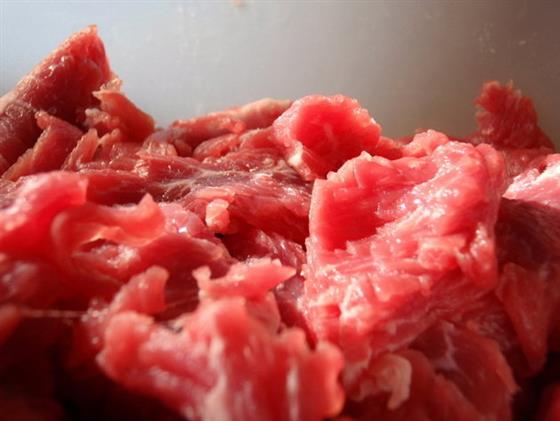
Ways to Cut Satay Meat
By Tris Marlis - Tuesday, Jul 16, 2013
Knowing that he needs to prepare 4000 sticks of chicken and beef satay for a food festival, Sam from Alhambra Satay requested of his suppliers: “have my chicken meat ready cut in small cubes, but beef… I’ll cut it myself.”
Unlike any other protein – like chicken, seafood or mutton – certain parts of beef have very rough bundles of long muscle fibers, such as flank, skirt steak and hanger steak. The way you slice it, even after it’s perfectly roasted, can make or break your dish Sam knew it and to avoid that, there is only one rule to follow – cut or slice against the grain. Sam is a second generation satay hawker whose father once sold at the original Satay Club by the defunct Alhambra Theatre days at Beach Road when it was still a beach.
Meat is made up of bundles of long muscle fibers that are laid out parallel to one another. Certain cuts, such as loin or tenderloin, have thin muscle fiber bundles which form very fine grain. Thus, it will be soft and tender no matter how you slice them.
But cuts with harder working and thicker muscles fiber bundles are more flavourful, thus it is worth the effort. To “cut against the grain” helps shorten these muscle fibers so it barely holds together, making it easier to chew. Identify the grain by finding the direction which the muscle fibers are aligned, like rows of strings. Then place a sharp knife against the grain at 90 degrees… then slice.
This rule does not apply if the meat is prepared for stir-frying. In this case, it is best to keep the muscle fiber as it helps to hold the meat together when it’s being tossed in a wok or pan. Chicken and fish fillet generally have thin muscle fiber and very fine grain and so it does not matter how you slice with an exception of sashimi. Since sashimi is served raw, besides the freshness and quality of seafood, the way it’s being sliced is crucial too.
Apply the same rule when preparing sashimi, such as salmon and tuna. With salmon, the grain can be easily identified as the white threads on the orange flesh. Slice against the white lines so the fatty protein will fall apart easily – that’s the “melt in your mouth” effect.



